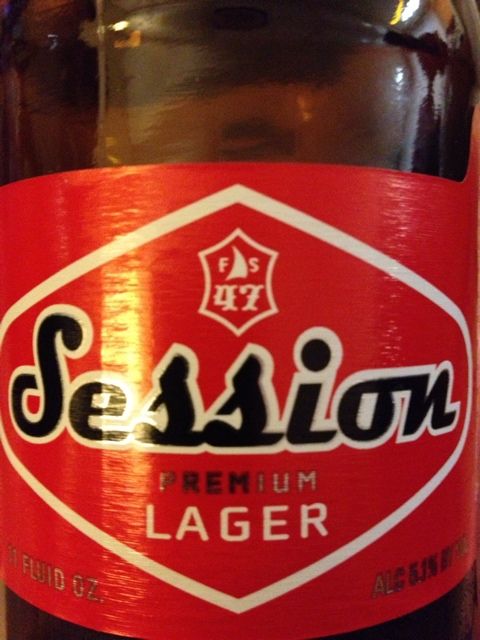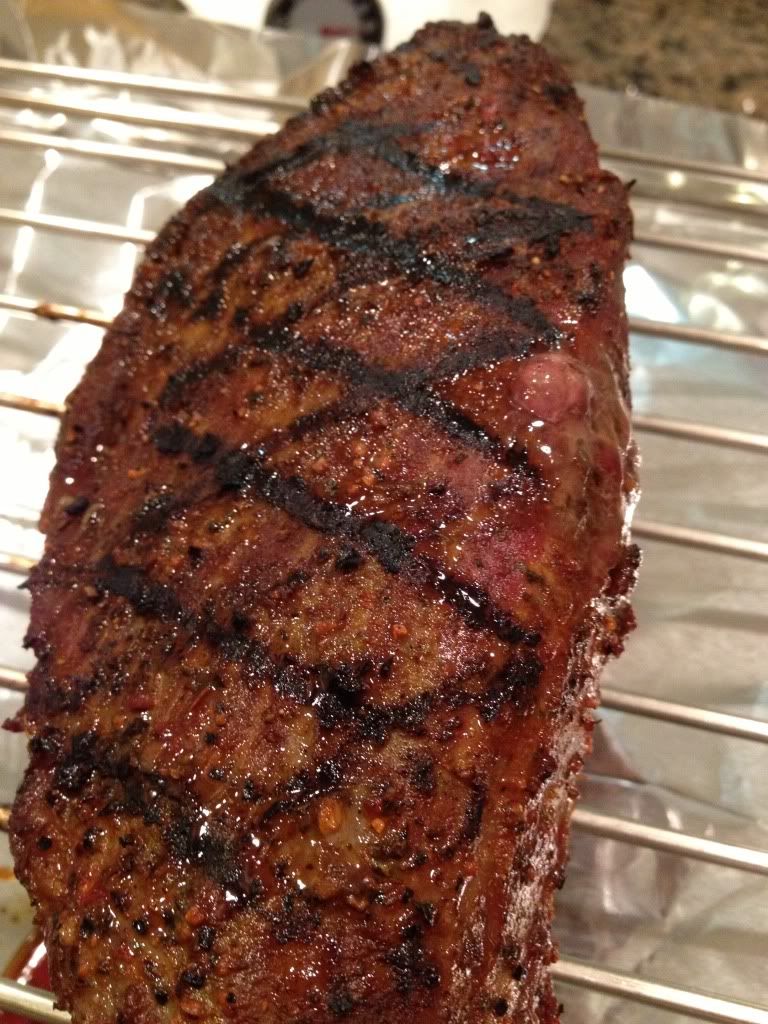More Costco love: http://www.nytimes.com/2005/07/17/business/yourmoney/17costco.html?_r=3&pagewanted=all
JIM SINEGAL, the chief executive of Costco Wholesale, the nation's fifth-largest retailer, had all the enthusiasm of an 8-year-old in a candy store as he tore open the container of one of his favorite new products: granola snack mix. "You got to try this; it's delicious," he said. "And just $9.99 for 38 ounces."
Some 60 feet away, inside Costco's cavernous warehouse store here in the company's hometown, Mr. Sinegal became positively exuberant about the 87-inch-long Natuzzi brown leather sofas. "This is just $799.99," he said. "It's terrific quality. Most other places you'd have to pay $1,500, even $2,000."
But the pi?ce de r?sistance, the item he most wanted to crow about, was Costco's private-label pinpoint cotton dress shirts. "Look, these are just $12.99," he said, while lifting a crisp blue button-down. "At Nordstrom or Macy's, this is a $45, $50 shirt."
Combining high quality with stunningly low prices, the shirts appeal to upscale customers - and epitomize why some retail analysts say Mr. Sinegal just might be America's shrewdest merchant since Sam Walton.
But not everyone is happy with Costco's business strategy. Some Wall Street analysts assert that Mr. Sinegal is overly generous not only to Costco's customers but to its workers as well.
Costco's average pay, for example, is $17 an hour, 42 percent higher than its fiercest rival, Sam's Club. And Costco's health plan makes those at many other retailers look Scroogish. One analyst, Bill Dreher of Deutsche Bank, complained last year that at Costco "it's better to be an employee or a customer than a shareholder."
Mr. Sinegal begs to differ. He rejects Wall Street's assumption that to succeed in discount retailing, companies must pay poorly and skimp on benefits, or must ratchet up prices to meet Wall Street's profit demands.
Good wages and benefits are why Costco has extremely low rates of turnover and theft by employees, he said. And Costco's customers, who are more affluent than other warehouse store shoppers, stay loyal because they like that low prices do not come at the workers' expense. "This is not altruistic," he said. "This is good business."
He also dismisses calls to increase Costco's product markups. Mr. Sinegal, who has been in the retailing business for more than a half-century, said that heeding Wall Street's advice to raise some prices would bring Costco's downfall.
"When I started, Sears, Roebuck was the Costco of the country, but they allowed someone else to come in under them," he said. "We don't want to be one of the casualties. We don't want to turn around and say, 'We got so fancy we've raised our prices,' and all of a sudden a new competitor comes in and beats our prices."
At Costco, one of Mr. Sinegal's cardinal rules is that no branded item can be marked up by more than 14 percent, and no private-label item by more than 15 percent. In contrast, supermarkets generally mark up merchandise by 25 percent, and department stores by 50 percent or more.
"They could probably get more money for a lot of items they sell," said Ed Weller, a retailing analyst at ThinkEquity.
But Mr. Sinegal warned that if Costco increased markups to 16 or 18 percent, the company might slip down a dangerous slope and lose discipline in minimizing costs and prices.
Mr. Sinegal, whose father was a coal miner and steelworker, gave a simple explanation. "On Wall Street, they're in the business of making money between now and next Thursday," he said. "I don't say that with any bitterness, but we can't take that view. We want to build a company that will still be here 50 and 60 years from now."
IF shareholders mind Mr. Sinegal's philosophy, it is not obvious: Costco's stock price has risen more than 10 percent in the last 12 months, while Wal-Mart's has slipped 5 percent. Costco shares sell for almost 23 times expected earnings; at Wal-Mart the multiple is about 19.Mr. Dreher said Costco's share price was so high because so many people love the company. "It's a cult stock," he said.
Emme Kozloff, an analyst at Sanford C. Bernstein & Company, faulted Mr. Sinegal as being too generous to employees, noting that when analysts complained that Costco's workers were paying just 4 percent toward their health costs, he raised that percentage only to 8 percent, when the retail average is 25 percent.
"He has been too benevolent," she said. "He's right that a happy employee is a productive long-term employee, but he could force employees to pick up a little more of the burden."
Mr. Sinegal says he pays attention to analysts' advice because it enforces a healthy discipline, but he has largely shunned Wall Street pressure to be less generous to his workers.
"When Jim talks to us about setting wages and benefits, he doesn't want us to be better than everyone else, he wants us to be demonstrably better," said John Matthews, Costco's senior vice president for human resources.
With his ferocious attention to detail and price, Mr. Sinegal has made Costco the nation's leading warehouse retailer, with about half of the market, compared with 40 percent for the No. 2, Sam's Club. But Sam's is not a typical runner-up: it is part of the Wal-Mart empire, which, with $288 billion in sales last year, dwarfs Costco.
But it is the customer, more than the competition, that keeps Mr. Sinegal's attention. "We're very good merchants, and we offer value," he said. "The traditional retailer will say: 'I'm selling this for $10. I wonder whether I can get $10.50 or $11.' We say: 'We're selling it for $9. How do we get it down to $8?' We understand that our members don't come and shop with us because of the fancy window displays or the Santa Claus or the piano player. They come and shop with us because we offer great values."
Costco was founded with a single store in Seattle in 1983; it now has 457 stores, mostly in the United States, but also in Canada, Britain, South Korea, Taiwan and Japan. Wal-Mart, by contrast, had 642 Sam's Clubs in the United States and abroad as of Jan. 31.Costco's profit rose 22 percent last year, to $882 million, on sales of $47.1 billion. In the United States, its stores average $121 million in sales annually, far more than the $70 million for Sam's Clubs. And the average household income of Costco customers is $74,000 - with 31 percent earning over $100,000.
One reason the company has risen to the top and stayed there is that Mr. Sinegal relentlessly refines his model of the warehouse store - the bare-bones, cement-floor retailing space where shoppers pay a membership fee to choose from a limited number of products in large quantities at deep discounts. Costco has 44.6 million members, with households paying $45 a year and small businesses paying $100.
A typical Costco store stocks 4,000 types of items, including perhaps just four toothpaste brands, while a Wal-Mart typically stocks more than 100,000 types of items and may carry 60 sizes and brands of toothpastes. Narrowing the number of options increases the sales volume of each, allowing Costco to squeeze deeper and deeper bulk discounts from suppliers.
"He's a zealot on low prices," Ms. Kozloff said. "He's very reticent about finagling with his model."
Despite Costco's impressive record, Mr. Sinegal's salary is just $350,000, although he also received a $200,000 bonus last year. That puts him at less than 10 percent of many other chief executives, though Costco ranks 29th in revenue among all American companies.
"I've been very well rewarded," said Mr. Sinegal, who is worth more than $150 million thanks to his Costco stock holdings. "I just think that if you're going to try to run an organization that's very cost-conscious, then you can't have those disparities. Having an individual who is making 100 or 200 or 300 times more than the average person working on the floor is wrong."
There is little love lost between Wal-Mart and Costco. Wal-Mart, for example, boasts that its Sam's Club division has the lowest prices of any retailer. Mr. Sinegal emphatically dismissed that assertion with a one-word barnyard epithet. Sam's might make the case that its ketchup is cheaper than Costco's, he said, "but you can't compare Hunt's ketchup with Heinz ketchup."
Still, Costco is feeling the heat from Sam's Club. When Sam's began to pare prices aggressively several years ago, Costco had to shave its prices - and its already thin profit margins - ever further.
"Sam's Club has dramatically improved its operation and improved the quality of their merchandise," said Mr. Dreher, the Deutsche Bank analyst. "Using their buying power together with Wal-Mart's, it forces Costco to be very sharp on their prices."
Mr. Sinegal's elbows can be sharp as well. As most suppliers well know, his gruff charm is not what lets him sell goods at rock-bottom prices - it's his fearsome toughness, which he rarely shows in public. He often warns suppliers not to offer other retailers lower prices than Costco gets.
When a frozen-food supplier mistakenly sent Costco an invoice meant for Wal-Mart, he discovered that Wal-Mart was getting a better price. "We have not brought that supplier back," Mr. Sinegal said.
He has to be flinty, he said, because the competition is so fierce. "This is not the Little Sisters of the Poor," he said. "We have to be competitive in the toughest marketplace in the world against the biggest competitor in the world. We cannot afford to be timid."
Nor can he afford to let personal relationships get in his way. Tim Rose, Costco's senior vice president for food merchandising, recalled a time when Starbucks did not pass along savings from a drop in coffee bean prices. Though he is a friend of the Starbucks chairman, Howard Schultz, Mr. Sinegal warned he would remove Starbucks coffee from his stores unless it cut its prices.
Starbucks relented.
"Howard said, 'Who do you think you are? The price police?' " Mr. Rose recalled, adding that Mr. Sinegal replied emphatically that he was.
If Mr. Sinegal feels proprietary about warehouse stores, it is for good reason. He was present at the birth of the concept, in 1954. He was 18, a student at San Diego Community College, when a friend asked him to help unload mattresses for a month-old discount store called Fed-Mart.
What he thought would be a one-day job became a career. He rose to executive vice president for merchandising and became a prot?g? of Fed-Mart's chairman, Sol Price, who is credited with inventing the idea of high-volume warehouse stores that sell a limited number of products.
Mr. Price sold Fed-Mart to a German retailer in 1975 and was fired soon after. Mr. Sinegal then left and helped Mr. Price start a new warehouse company, Price Club. Its huge success led others to enter the business: Wal-Mart started Sam's Club, Zayre's started BJ's Wholesale Club and a Seattle entrepreneur tapped Mr. Sinegal to help him found Costco.
Costco has used Mr. Price's formula: sell a limited number of items, keep costs down, rely on high volume, pay workers well, have customers buy memberships and aim for upscale shoppers, especially small-business owners. In addition, don't advertise - that saves 2 percent a year in costs. Costco and Price Club merged in 1993.
"Jim has done a very good job in balancing the interests of the shareholders, the employees, the customers and the managers," said Mr. Price, now 89 and retired. "Most companies tilt too much one way or the other."
Mr. Sinegal, who is 69 but looks a decade younger, also delights in not tilting Costco too far into cheap merchandise, even at his warehouse stores. He loves the idea of the "treasure hunt" - occasional, temporary specials on exotic cheeses, Coach bags, plasma screen televisions, Waterford crystal, French wine and $5,000 necklaces - scattered among staples like toilet paper by the case and institutional-size jars of mayonnaise.
The treasure hunts, Mr. Sinegal says, create a sense of excitement and customer loyalty.
This knack for seeing things in a new way also explains Costco's approach to retaining employees as well as shoppers. Besides paying considerably more than competitors, for example, Costco contributes generously to its workers' 401(k) plans, starting with 3 percent of salary the second year and rising to 9 percent after 25 years.
ITS insurance plans absorb most dental expenses, and part-time workers are eligible for health insurance after just six months on the job, compared with two years at Wal-Mart. Eighty-five percent of Costco's workers have health insurance, compared with less than half at Wal-Mart and Target.
Costco also has not shut out unions, as some of its rivals have. The Teamsters union, for example, represents 14,000 of Costco's 113,000 employees. "They gave us the best agreement of any retailer in the country," said Rome Aloise, the union's chief negotiator with Costco. The contract guarantees employees at least 25 hours of work a week, he said, and requires that at least half of a store's workers be full time.
Workers seem enthusiastic. Beth Wagner, 36, used to manage a Rite Aid drugstore, where she made $24,000 a year and paid nearly $4,000 a year for health coverage. She quit five years ago to work at Costco, taking a cut in pay. She started at $10.50 an hour - $22,000 a year - but now makes $18 an hour as a receiving clerk. With annual bonuses, her income is about $40,000.
"I want to retire here," she said. "I love it here."




